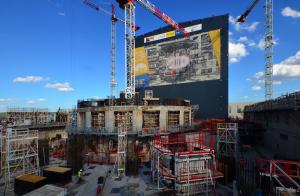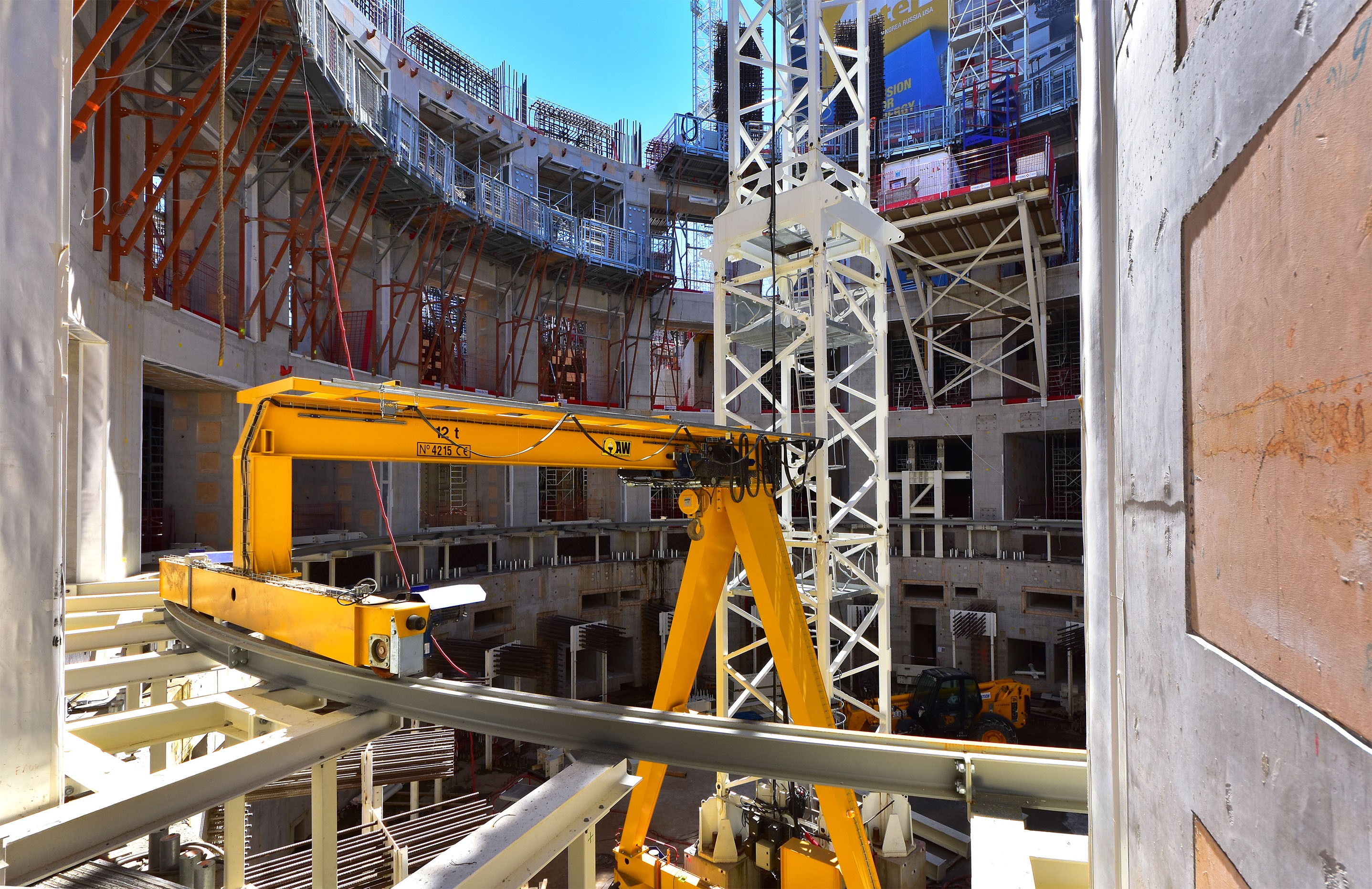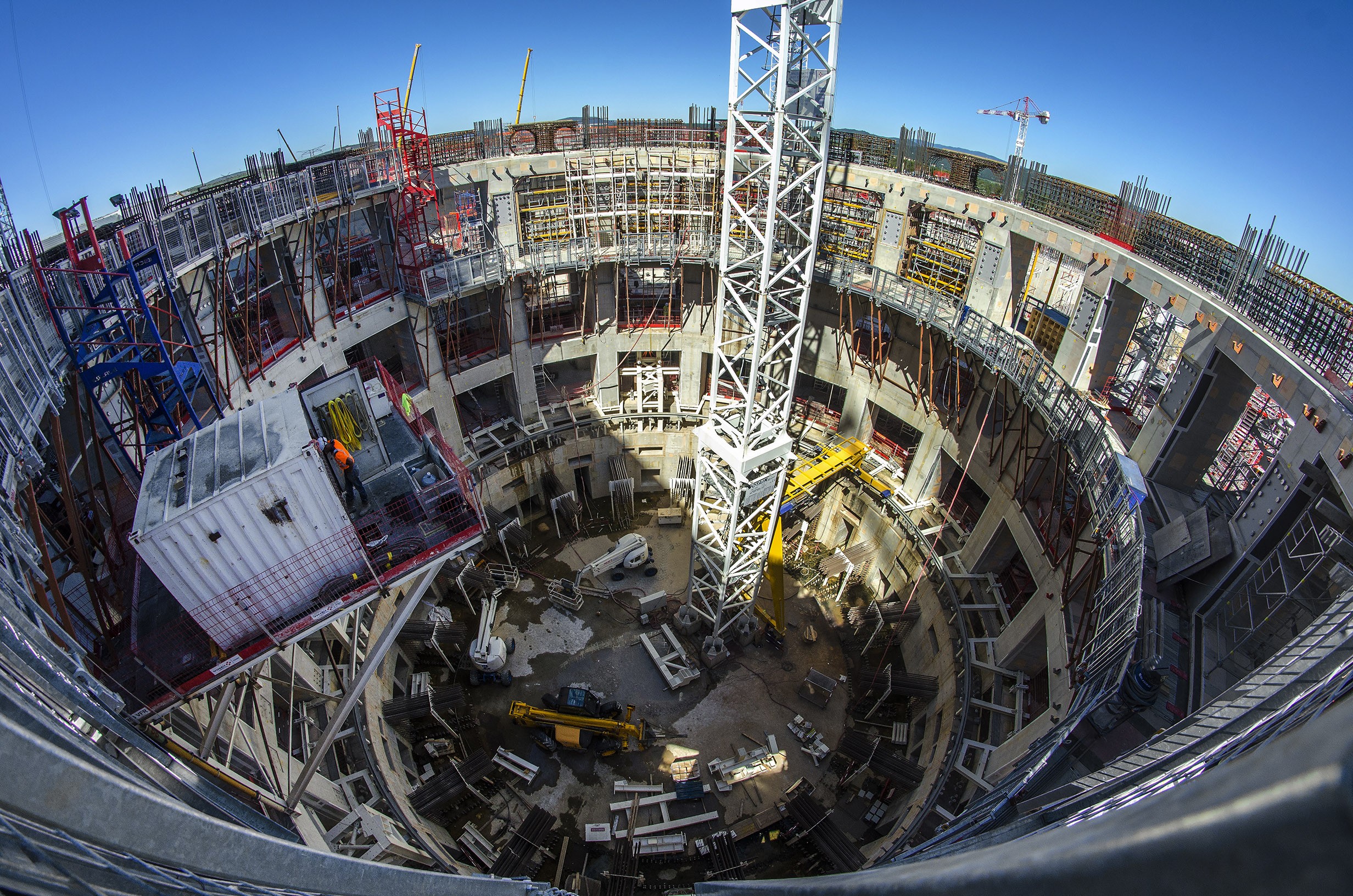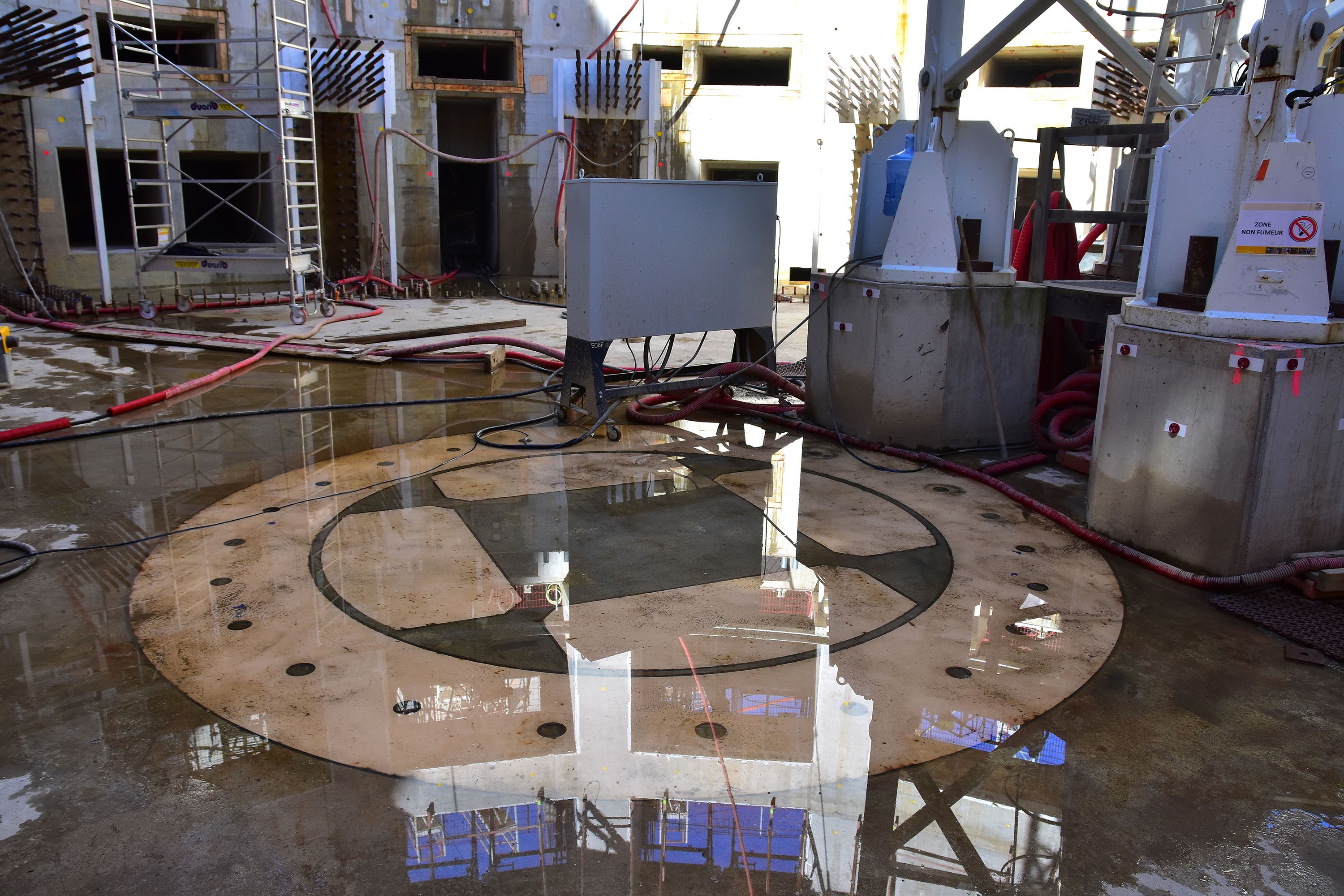The ring fortress
17 Jul 2017
The ITER bioshield, centre, and the Diagnostics Building, right, have both reached L2 level and work is underway on L3. Approximately 400 workers in two shifts are in involved in Tokamak Complex construction.
ITER's steel-and-concrete bioshield has become the defining feature of Tokamak Complex construction. Two levels only remain to be poured (out of six).
It is a "ring fortress," with walls up to three-metres thick, that will completely surround the Tokamak and protect workers and the environment from the radiation generated by the fusion reaction.
Over the past year, we've seen the walls rise steadily. Six months ago, part of the first above ground level (L1) could be seen and work was starting on L2. Today L2 forms a complete ring, the first pours are underway for L3, and some rebar elements have already been installed for top level L4.
Now, let's get inside the fortress and see what's happening there ...







